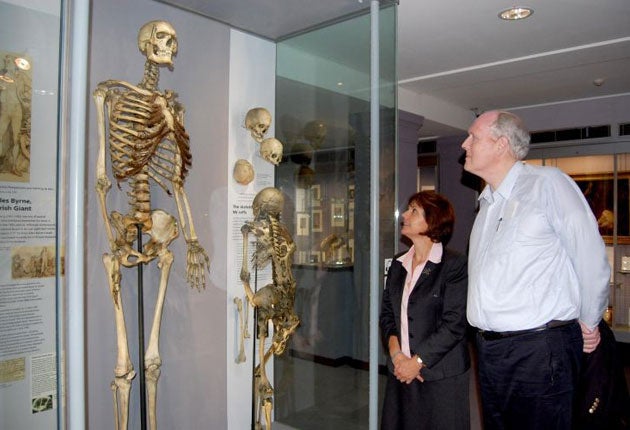Land of the giants discovered after mutant gene investigation

Your support helps us to tell the story
From reproductive rights to climate change to Big Tech, The Independent is on the ground when the story is developing. Whether it's investigating the financials of Elon Musk's pro-Trump PAC or producing our latest documentary, 'The A Word', which shines a light on the American women fighting for reproductive rights, we know how important it is to parse out the facts from the messaging.
At such a critical moment in US history, we need reporters on the ground. Your donation allows us to keep sending journalists to speak to both sides of the story.
The Independent is trusted by Americans across the entire political spectrum. And unlike many other quality news outlets, we choose not to lock Americans out of our reporting and analysis with paywalls. We believe quality journalism should be available to everyone, paid for by those who can afford it.
Your support makes all the difference.He stood nearly 8ft tall, earned his living from street shows and died at 22. Now researchers have found that Charles Byrne, the most famous giant in medical history, sprang from a mutant gene that first appeared 1,500 years ago and is still causing excessive growth in families in the same area of Northern Ireland where he was born.
The current "race of giants" is concentrated in a small area, but researchers requested its location not be disclosed to protect residents from curious onlookers. Following the discovery, doctors screened four families from the area found to carry the same genetic mutation and identified three patients in the early stages of excessive growth who had not realised they were affected. The four families had given rise to half-a-dozen giants as well as others affected by growth abnormalities in recent generations.
Gigantism is caused by a benign tumour of the pituitary gland which produces excessive growth hormone. If it occurs early in life it can cause a child to grow very tall, but in adulthood it causes abnormal growth of the face, hands, feet and other parts of the body in the condition known as acromegaly.
Charles Byrne, born in 1761, grew rapidly in his teens and travelled to London at the age of 19 to seek his fortune. An etching from the period shows him with two men nearly as tall, who came from a village eight miles from his. After a successful if brief career displaying his physique he seems to have drunk himself into an early grave. His skeleton is on display in the museum at the Royal College of Surgeons in London.
Marta Korbonits, professor of endocrinology at Barts and the London School of Medicine, who led the study, published in the New England Journal of Medicine, said the idea for the investigation came to her after two cousins from Northern Ireland attended her clinic in London, where she cares for 150 families affected by growth disorders.
She said: "It was really a long shot. I didn't know much about Northern Ireland geography but after the first family came to me I thought of the Irish giant and initiated the studies. Then the other families fell into my lap.
"By the time I got to the fourth I was able to tell the patient his family originated from Northern Ireland and even which village they came from. He practically fell off his chair.
Join our commenting forum
Join thought-provoking conversations, follow other Independent readers and see their replies
Comments